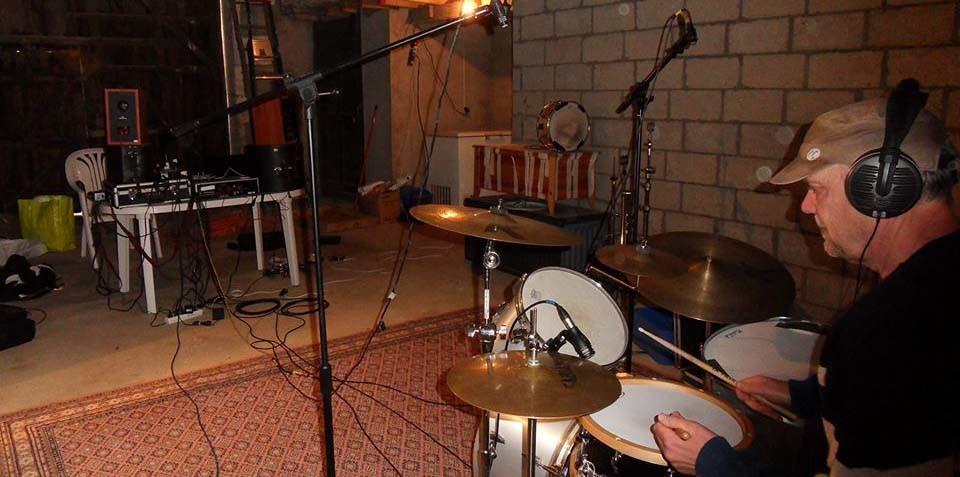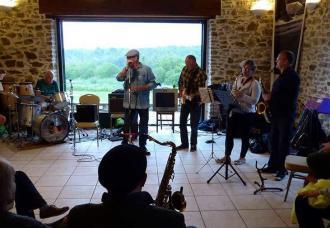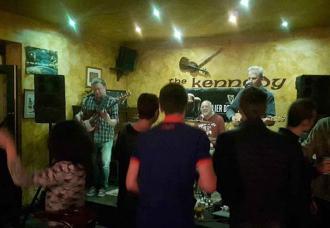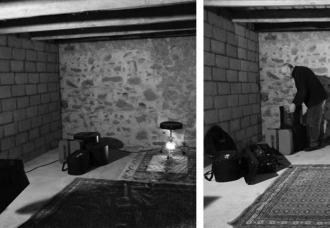The Magix Buss—Part One
I have made every mistake under the sun when it comes to recording drums. Before 2006, my experience of recording (drums in particular) was in commercial analogue recording studios. Microphones… mixing desks… tape machines—the ‘red light’—an engineer! I have recorded in a number of studios in London and the Midlands (England) and even on tape here in France. This experience, in short detail:
turning up at a studio (prepared); assembling drums; allowing the engineer to get a decent sound with placement of mics and dampening (including endless thudding of the kick drum/snare/toms…similar to a sound-check at a concert); getting the right ‘mix’ (array of sound in the ‘cans’ (headphones)—being able to hear oneself play! Then waiting for the ‘red light’ and/or the engineer saying ‘you’re rolling’. And then playing along to the track—knowing full well that it has to be done, more-or-less, in one-take. You can feel that very difficult fill around the kit coming up just before the end…you have to get it right…OR—back to the beginning (hearing the tape being rewound and getting cued again). It takes some inner strength and confidence. It could be that the ‘rhythm section’ play live together and this is easier and often with a better feel. All instruments can re-do their part (on the whole) but for the drums it’s much more difficult to ‘drop-in’ (be recorded over a part that wasn’t quite good enough). Often the drums will play along to a click track—this is a regular pulse/sound in the ear—a certain number of beats per minute.
In 2006 I got my first—very simple and free—recording package, downloaded by my wife who was also using the same for teaching French. This is where I became both player and engineer and where all my mistakes began. This was also, of course, the beginning of ‘digital recording’. Digital recording is easier than tape/analogue…it heralded the true launch of the ‘home studio’ in so much as ‘ordinary folk’ could now record at home with little cost.
What was needed—IDEALLY: drums/mics/computer/sound card/digital audio workstation (DAW).
What could be used:
1/—an electronic drum-kit with midi.
(Wikipedia describes midi as such: MIDI (/ˈmɪdi/; short for Musical Instrument Digital Interface) is a technical standard that describes a protocol, digital interface and connectors and allows a wide variety of electronic musical instruments, computers and other related devices to connect and communicate with one another.[1] A single MIDI link can carry up to sixteen channels of information, each of which can be routed to a separate device.)
In effect—for you and me—this is a special lead from the drum-kit into the sound card of the computer and into the DAW.
2/—A keyboard generating drum sounds that could be tapped and recorded live into the DAW.
3/—Drum loops and patterns. Software packages that contain drum rhythms/fills/repeated rhythms. These were also available for analogue recording (and many ‘demo’ recordings used them before the digital age).
The first experience
I have always found it odd that my first attempts at recording were let down by the ‘drums’. I play a variety of instruments…but naively (VERY naively) I did not use (and this might have been my ignorance at the time) a stable rhythmic loop/pattern to record the various instruments on top of. As I was recording alone, then everything was down to me. If I had used a looped pattern that would have set a FIRM and ACCURATE rhythm. If only! What did I do? Well…
I did the craziest thing I could have. And in some ways I needed to be a drummer to do this. I took my keyboard/synthesizer and loaded the drum sounds on the keys. With two fingers, pressing three keys, I was able to play snare, hi-hat and open hi-hat (to get the ‘pea-soup’ sound). I left gaps for fills…Then I added the kick! And with the toms going from small to large I had to play down the keyboard—counter-intuitively. What a mess! The worst of it was that I was pleased with myself and what I had produced.
Though I had played to a click the FOUNDATION of the music was unstable. This was and is a big error. If ever you do any recording please, please make sure the foundation is absolutely solid. This lesson would have been adequately learnt had I not later distributed (and indeed sold) some of these CDs. Thus I left have left a trail to these—what I now consider, primitive recordings.
And what of the Magix Buss?—well, that will arrive in Part Two. Get ready for the ride. Get ready to hop on board.
If you want to have more idea of the drum-kit and its components please do check out drum page on youtube. And feel free to ask any questions.








